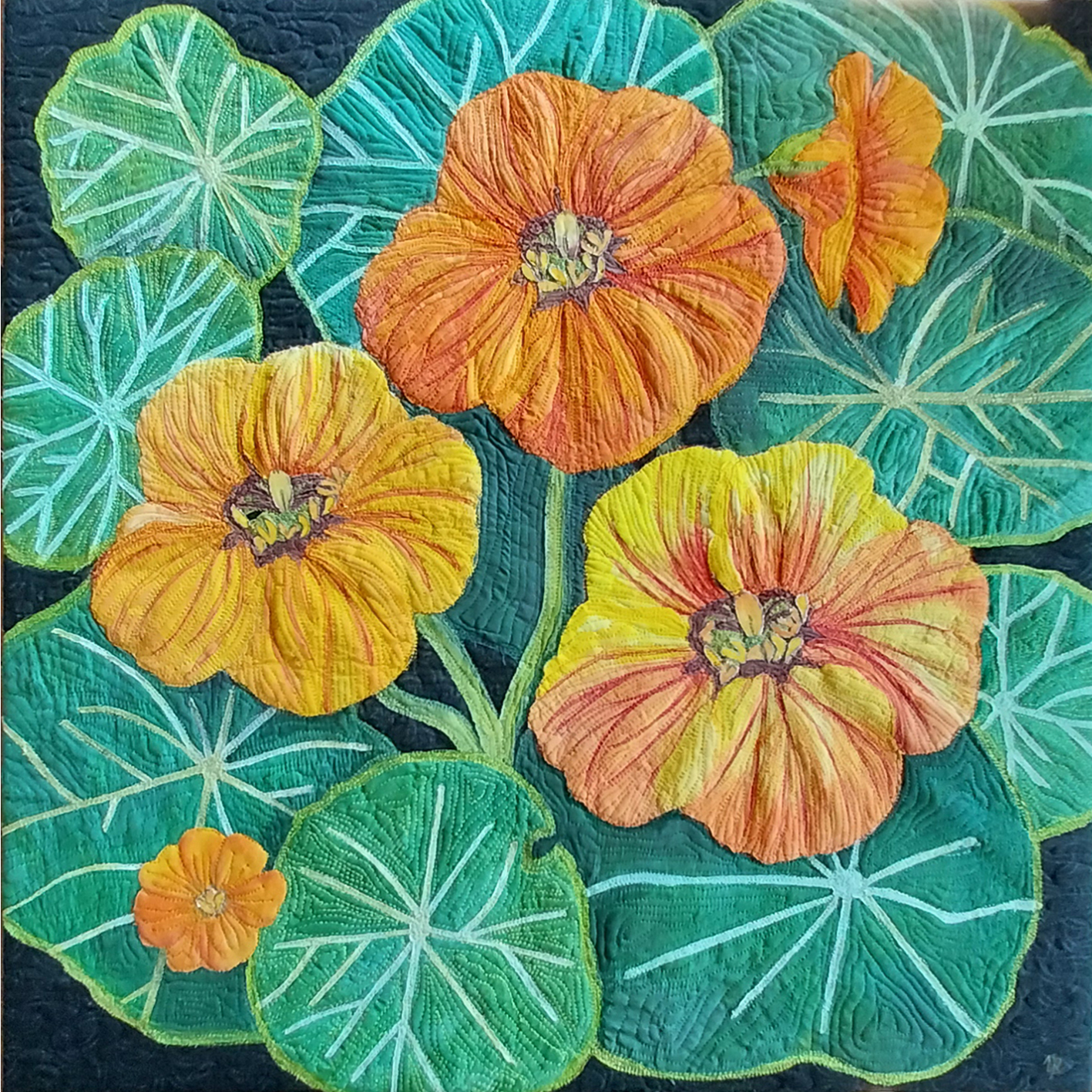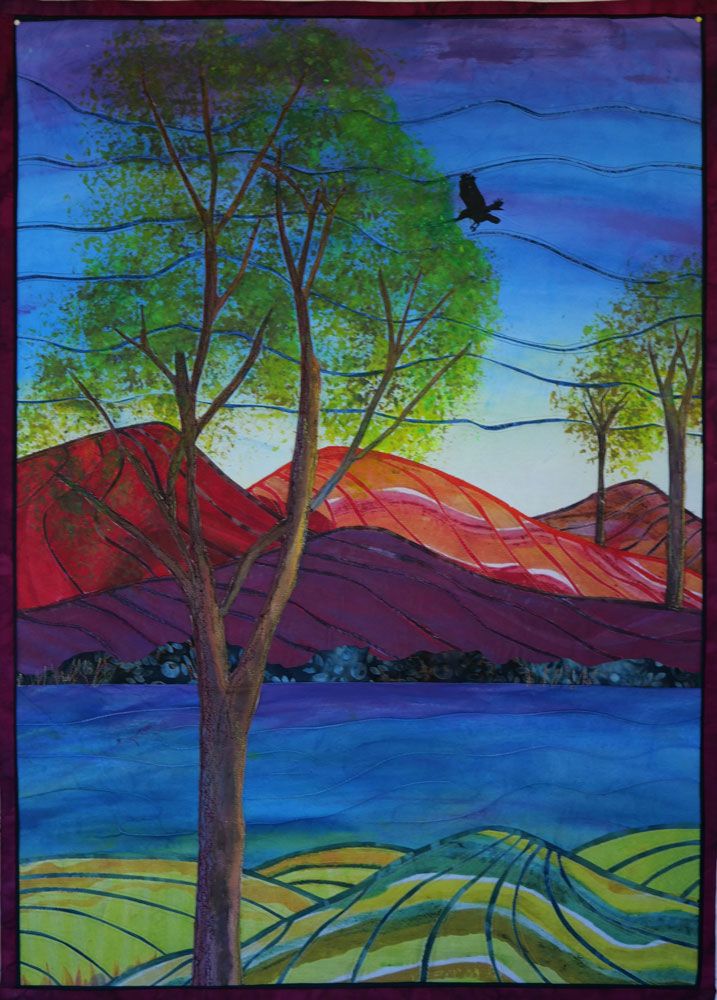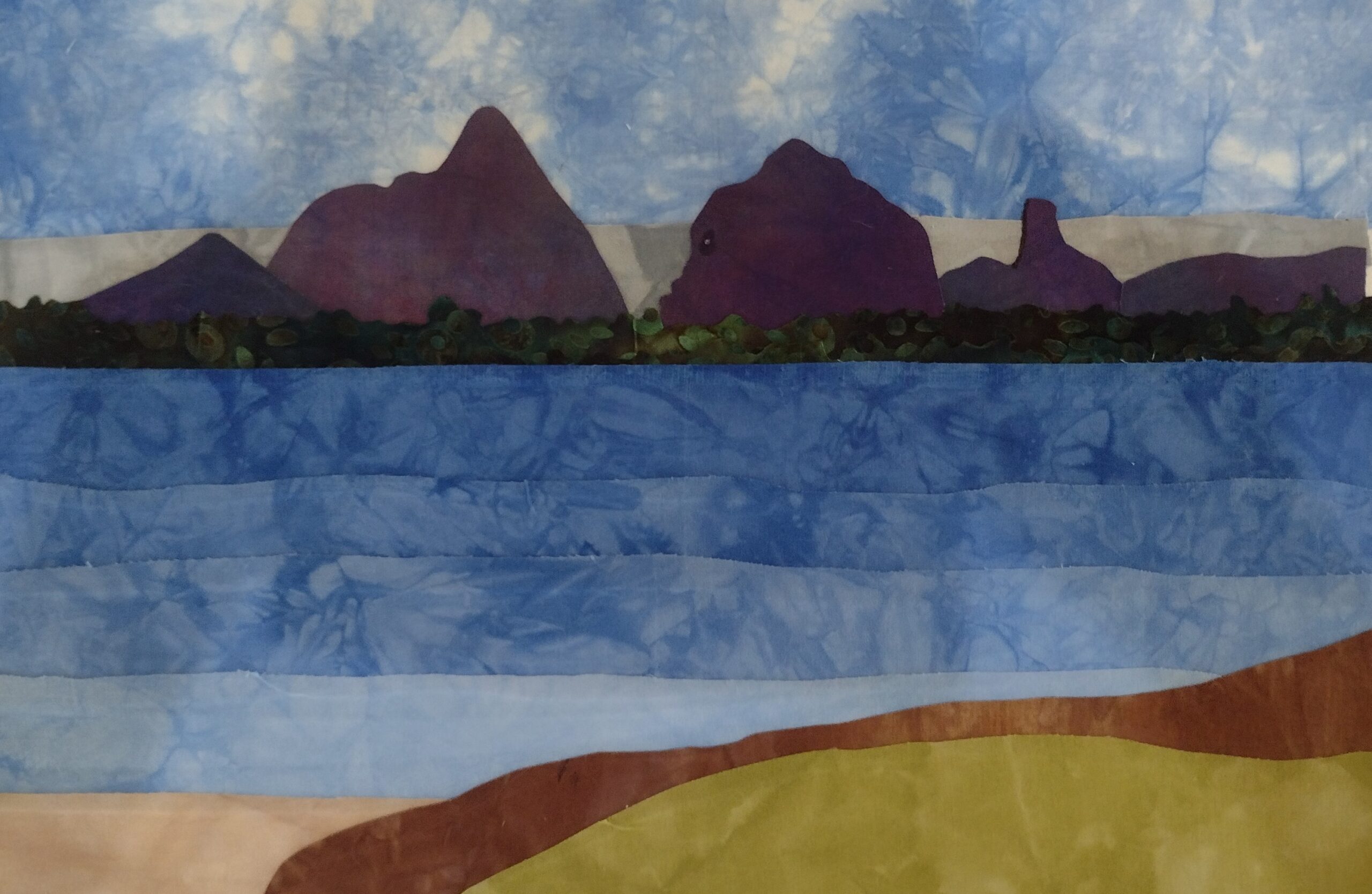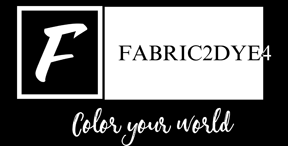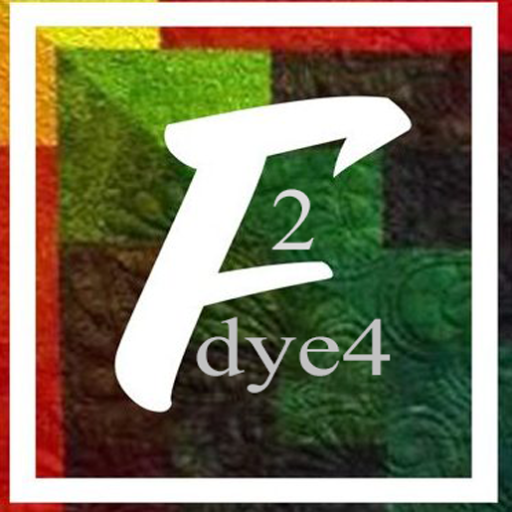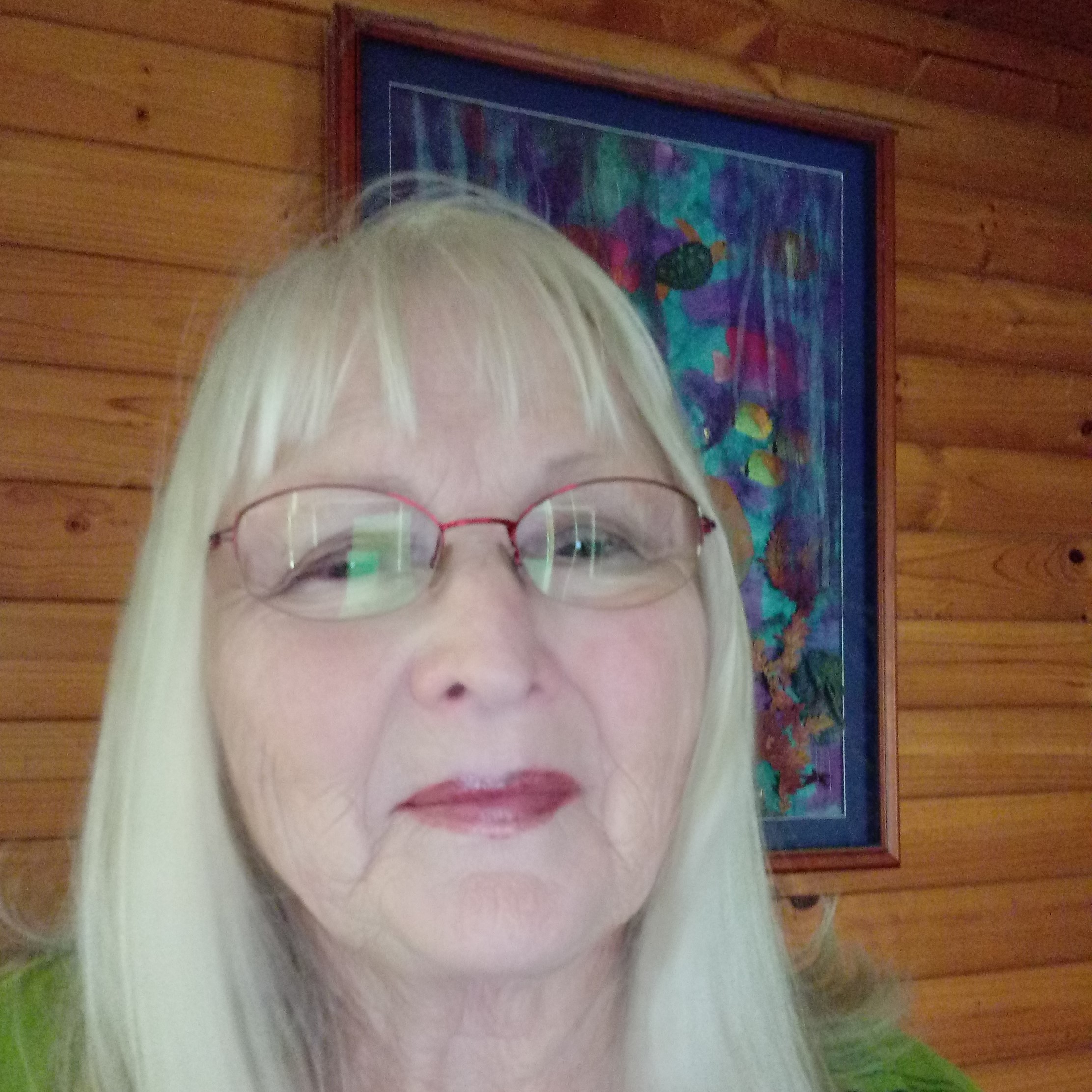
Lyn Kenny
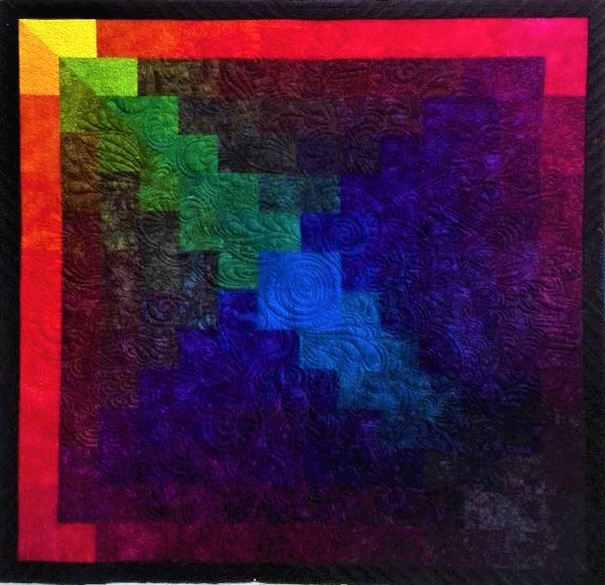
All About Colour
Why do I dye my own fabric?
Because I am obsessed with colour – particularly blues, teals, purples, burgundies…where do I stop? And I like the fabric to have some texture! And I like to mix and overlay colors to create new ones!
You can’t buy this fabric! So, you have to dye your own! Fabric2Dye4!
I’ve been dyeing fabric since the 1980’s. The only fabric I buy now is white fabric, preferably PFD (Prepared for Dyeing). PFD fabric is not easy to find in Australia, so I also buy white fabric and prepare it for dyeing by scouring it. There are other ways to do this, but I now boil it for 20 minutes in an Urn.
There are many ways of colouring your own fabric, using both dyes and fabric paint.
When you dye fabric with Procion MX Dyes, the molecules of the dye form a permanent covalent bond with the fabric molecules. Procion dyes are non-toxic, easy to use and applied at room temperature. They are wash-fast and light-fast. They do not change the hand of the fabric – it remains as soft as it was originally. Fibre-reactive dyes work on 100% cellulose fibres – cotton, linen, hemp, viscose rayon, jute, ramie and silk. The dye is transparent, so can be used to over-dye commercial or previously dyed fabrics; the colour will be affected by the previous layer of colour.
Fabric paint (sometimes referred to as Ink) is usually an acrylic compound and sits on the surface of the fabric which affects the feel of the cloth. Depending on the technique used, the cloth will always be a little stiffer than the original fabric and can sometimes feel quite firm, even heavy. Textile paints will work on any fibre or combination of fibres.
There is a place for both dyes and paints in the colouring of cloth, particularly for art textiles. Combining dyes as a first layer and then using thickened dyes or paints for printing, stamping, screen printing, sun printing, mono-printing – all produce beautiful pieces of fabric.
Welcome to my dye studio
